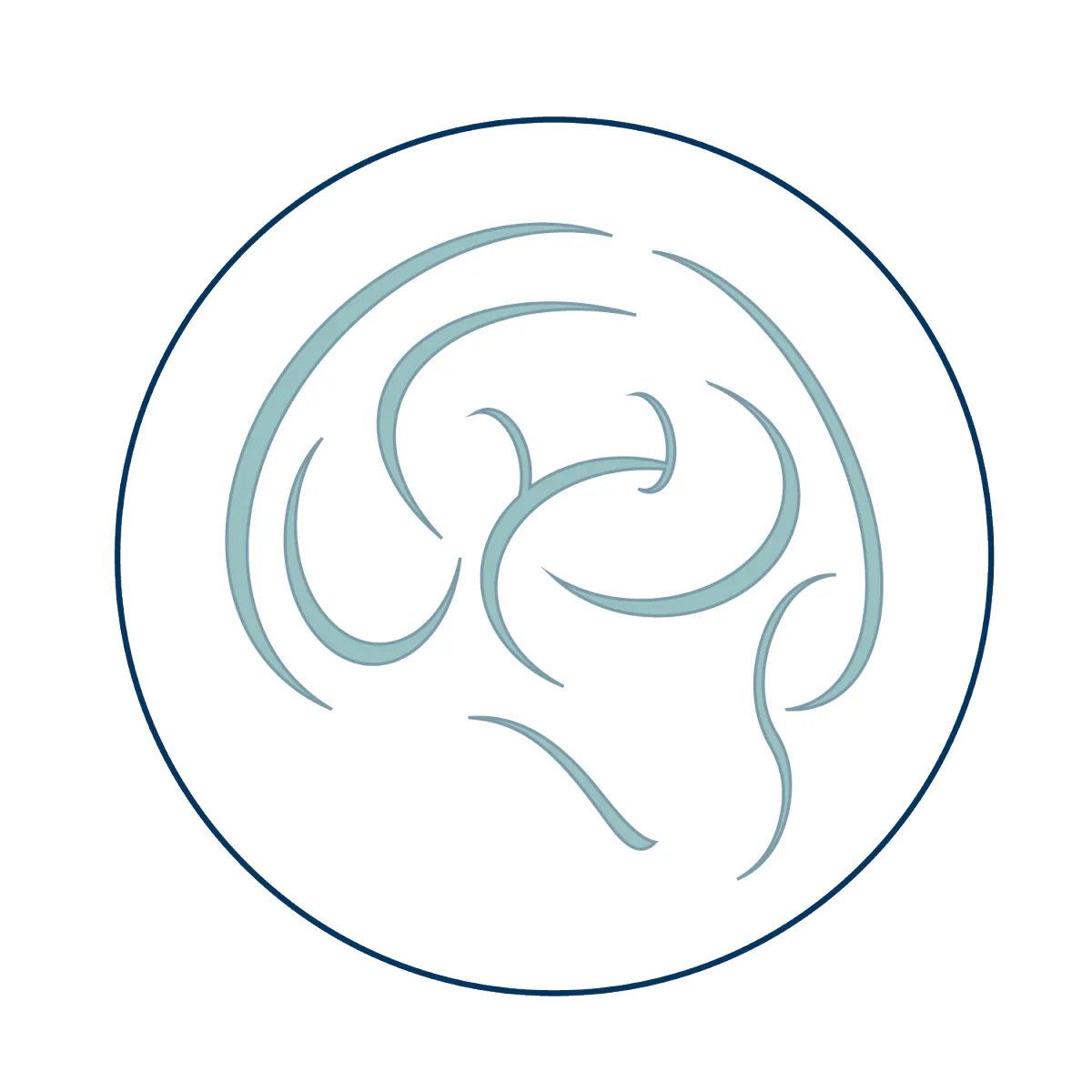Welcome to the Brain & Faith Blog
This is where neuroscience and Scripture meet to bring clarity, calm, and confidence into everyday life. From brain health tips and faith-based practices to practical support for parents of young athletes, you’ll find simple, actionable steps to strengthen your mind, nurture your spirit, and guide your family toward lasting peace and resilience.

When Pain Rewires Your Brain: How Chronic Pain Changes the Mind and What You Can Do
You wake up, and it's there. You go to bed, and it's still there. The ache in your back, the throb in your joints, the persistent headache that's become your unwelcome companion. If you're living with chronic pain, you already know how it affects your body. But what you might not realize is how profoundly it's reshaping your brain.
Chronic pain isn't just a physical experience. It's a neurological one that literally changes how your brain functions, processes information, and manages emotions. Understanding this connection isn't about adding to your worries. It's about empowering you with knowledge that can transform how you approach healing.
Your Brain on Chronic Pain
When pain persists beyond three to six months, something significant happens in your brain. What started as a protective signal becomes a malfunctioning alarm system that won't turn off.
Research shows that people with chronic pain can lose up to 11% of their brain's gray matter. This isn't permanent damage, but it represents real changes in brain structure that affect how you think, remember, and process emotions. The longer the pain persists, the more pronounced these changes become.
Think of it like this: your brain is constantly trying to protect you from pain, but when that pain never goes away, your brain gets stuck in protection mode. It's like having a car alarm that keeps going off even when there's no threat.
The Stress Connection
Chronic pain triggers your body's stress response system, flooding your brain with stress hormones like cortisol. While these hormones are helpful in short bursts, chronic elevation wreaks havoc on brain function.
Your hippocampus, the brain's memory center, becomes particularly vulnerable. This explains why chronic pain often comes with brain fog, memory problems, and difficulty concentrating. It's not "all in your head." It's your brain trying to cope with an overwhelming situation.
The stress response also affects your prefrontal cortex, the area responsible for decision-making, planning, and emotional regulation. This is why chronic pain can make even simple tasks feel overwhelming and why emotional ups and downs become more intense.
When Your Brain Learns Pain Too Well
Here's where neuroplasticity, usually our friend, becomes complicated. Your brain is designed to learn and adapt, but chronic pain teaches it lessons you don't want it to learn.
Pain pathways that fire repeatedly become stronger and more sensitive. Your brain starts interpreting normal sensations as painful. A gentle touch might feel like sandpaper. Temperature changes might trigger intense discomfort. Your brain has become hypervigilant, treating everything as a potential threat.
This isn't weakness or imagination. It's your brain doing exactly what it's designed to do: learn from experience and protect you. Unfortunately, in chronic pain, this protective mechanism becomes part of the problem.
The Emotional Toll
Living with constant pain is emotionally exhausting. Your brain's emotional processing centers become overactive, making anxiety and depression common companions to chronic pain. This isn't a character flaw or lack of faith. It's a natural neurological response to persistent stress.
The areas of your brain that process physical pain overlap significantly with those that process emotional pain. This means chronic physical pain can literally hurt your heart and spirit, not just your body.
The Hidden Costs of Chronic Pain
Beyond the obvious physical discomfort, chronic pain creates a cascade of secondary effects that many people don't recognize as pain-related:
Cognitive Fatigue: Your brain uses enormous energy trying to process and manage constant pain signals. This leaves less mental energy for thinking, problem-solving, and memory formation. It's why you might feel mentally exhausted even when you haven't done anything particularly challenging.
Sleep Disruption: Pain interferes with both falling asleep and staying asleep. Poor sleep then amplifies pain sensitivity, creating a vicious cycle. Your brain needs quality sleep to repair and reset, but pain makes this nearly impossible.
Social Isolation: When you're in pain, social activities become difficult. You might cancel plans, avoid gatherings, or simply not have the energy for relationships. This isolation then feeds depression and anxiety, which amplify pain perception.
Identity Shifts: Chronic pain can fundamentally change how you see yourself. You might go from being active and capable to feeling limited and dependent. This identity shift affects self-esteem and can lead to grief over the person you used to be.
Breaking the Cycle: Hope for Healing
Understanding how chronic pain affects your brain isn't meant to discourage you. It's meant to validate your experience and point toward hope. The same neuroplasticity that allowed pain to rewire your brain can be harnessed for healing.
Gentle Movement as Medicine
Your brain needs evidence that movement is safe. Start incredibly small. Maybe it's gentle stretching in bed, slow walks around your house, or simple breathing exercises. The goal isn't to push through pain but to gradually teach your brain that movement can be safe and healing.
Water Therapy: If available, warm water can provide support for gentle movement. The buoyancy reduces stress on joints while the warmth can help relax muscles and calm the nervous system.
Pacing Strategies: Learn to break activities into smaller chunks with rest periods. This teaches your brain that activity doesn't always lead to increased pain, gradually building confidence in movement.
Progressive Muscle Relaxation: Systematically tensing and releasing muscle groups can help your brain distinguish between tension and relaxation, potentially reducing overall pain sensitivity.
Mindfulness and Pain
Mindfulness practices can literally change your brain's response to pain. When you observe pain without fighting it or fearing it, you begin to separate the physical sensation from the emotional suffering that often amplifies it.
This isn't about positive thinking or pretending pain doesn't exist. It's about changing your relationship with pain, which changes how your brain processes it.
Body Scan Meditation: Regularly practicing body awareness can help you notice areas of tension before they escalate and identify areas that feel neutral or comfortable, not just painful.
Breathing Techniques: Deep, slow breathing activates your parasympathetic nervous system, which can help calm pain responses and reduce stress hormones that amplify pain.
Acceptance Practices: Learning to accept pain without resistance can paradoxically reduce its intensity. Fighting pain often increases muscle tension and stress, making everything worse.
Sleep as Brain Medicine
Quality sleep is when your brain repairs and resets. Chronic pain often disrupts sleep, creating a vicious cycle. Prioritizing sleep hygiene, creating calming bedtime routines, and working with healthcare providers to address sleep issues can be transformative.
Sleep Environment: Create a cool, dark, quiet space that signals safety to your nervous system. Consider blackout curtains, white noise machines, or comfortable pillows that support your specific pain areas.
Bedtime Routines: Establish calming pre-sleep rituals that help your brain transition from day mode to rest mode. This might include gentle stretching, reading, or prayer.
Nutrition for Pain Management
What you eat directly affects inflammation levels and brain function. While nutrition can't cure chronic pain, it can significantly impact how your brain processes pain signals.
Anti-Inflammatory Foods: Omega-3 fatty acids, leafy greens, berries, and turmeric can help reduce systemic inflammation that may amplify pain signals.
Blood Sugar Stability: Dramatic blood sugar swings can increase pain sensitivity and mood instability. Eating balanced meals with protein, healthy fats, and complex carbohydrates helps maintain steady energy and mood.
Building Your Support Network
Chronic pain can be isolating, but healing happens in community. Building and maintaining relationships requires intentional effort when you're dealing with pain, but it's crucial for both emotional and physical healing.
Educate Your Circle: Help family and friends understand that chronic pain is real, invisible, and variable. Some days you might feel better than others, and that doesn't mean you're "faking it."
Find Your Tribe: Connect with others who understand chronic pain, whether through support groups, online communities, or chronic illness organizations. Shared understanding can be incredibly healing.
Professional Support Team: Consider building a team that might include your primary care doctor, pain specialists, physical therapists, counselors, and spiritual advisors. Each brings different tools to your healing journey.
A Different Kind of Strength
Living with chronic pain requires a different kind of strength than most people understand. It's the strength to keep going when your brain is constantly sending alarm signals. It's the courage to hope for better days when today feels overwhelming.
In Scripture, we see that God doesn't promise a life without suffering, but He promises to be with us in it. "He heals the brokenhearted and binds up their wounds" (Psalm 147:3). Sometimes healing looks different than we expect. Sometimes it's learning to live well within limitations. Sometimes it's finding peace in the midst of pain.
Your pain is real. Your struggle is valid. And your brain's response to chronic pain is a normal reaction to an abnormal situation. Understanding this can be the first step toward reclaiming your life, even if pain remains part of your story.
Small Steps Forward
You don't need to overhaul your entire life today. Start with one small step:
Practice three minutes of deep breathing
Take a gentle walk to your mailbox
Connect with one person who understands
Prioritize one element of good sleep hygiene
Ask for help with one task that's become difficult
Your brain is always learning. Today, you can begin teaching it new lessons about safety, healing, and hope.
Living with chronic pain while trying to maintain your mental health can feel overwhelming. Our Food for Thought Guide includes brain-supporting nutrition strategies that may help with pain management, or schedule a free clarity call to explore how brain health coaching can support your journey toward healing.
Brain Health Matters, LLC
Helping busy minds find peace through faith and neuroscience.
© 2025 Brain Health Matters, LLC. All rights reserved.
Terms & Conditions

